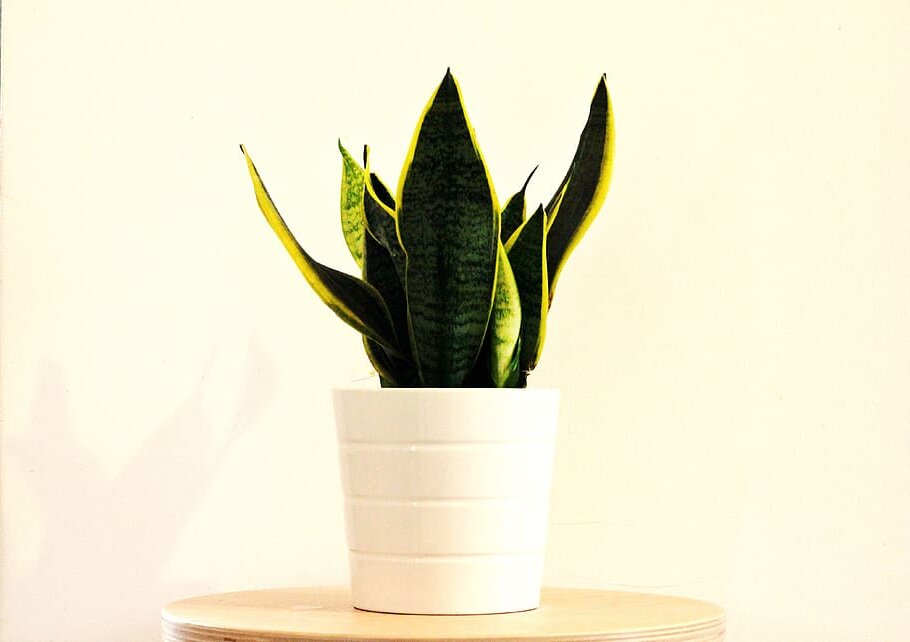This post contains affiliate links. If you buy something from one of our links we may earn a commission. Thanks

How To Care for Snake Plant
Snake Plants, also known as Sansevieria or Mother-in-Law’s Tongue, are some of the most adaptable and low-maintenance houseplants you can find.
These striking plants with their tall, upright leaves are not only aesthetically pleasing but also excellent air purifiers, making them a popular choice for both homes and offices.
Whether you’re a seasoned plant parent or just starting your green journey, Snake Plants are an excellent addition to any indoor space.
 Costa Farms Live Indoor Snake Plant, Sansevieria 12-Inches Tall, Decor Planter
Costa Farms Live Indoor Snake Plant, Sansevieria 12-Inches Tall, Decor Planter
How To Care for Snake Plant Key Takeaways:
- Place in low to bright indirect light.
- Use a well-draining soil mix of coco coir and perlite.
- Water sparingly, allowing soil to dry completely between waterings.
- Maintain average room temperatures. Fertilize lightly during the growing season.
- Clean leaves occasionally and prune as needed.
- Snake Plants are drought-tolerant, low-maintenance plants that thrive in various indoor conditions.
Snake Plant Care Reference Guide:
| Characteristic | Details |
|---|---|
| Common Name | Snake Plant, Mother-in-Law’s Tongue |
| Botanical Name | Sansevieria trifasciata (now classified under Dracaena) |
| Native Habitat | Tropical regions of West Africa |
| Plant Type | Perennial evergreen succulent |
| Growth Pattern | Upright, clumping growth with thick, sword-shaped leaves |
| Mature Size | 1–4 feet tall and 6–36 inches wide, depending on variety |
| Watering | Allow soil to dry completely between waterings; drought-tolerant |
| Light/Sun Exposure | Bright, indirect light to low light; tolerates some direct sun |
| Soil Type | Well-draining potting mix, such as cactus or succulent soil |
| Soil pH | Slightly acidic to neutral (6.0–7.0) |
| Temperature | 60–85°F (15–29°C); avoid temperatures below 50°F (10°C) |
| Humidity | Tolerates low humidity; thrives in average indoor conditions |
| Bloom Time & Flower Color | Rare indoors; produces small, fragrant greenish-white flowers |
| Potential Problems | Root rot (overwatering), leaf discoloration (low light), pests like spider mites or mealybugs |
| Repotting | Every 2–3 years or when roots outgrow the pot |
| Hardiness Zones (USDA) | Zones 9–11 (typically grown as a houseplant outside these zones) |
Easy Sansevieria Care Guide
Sansevieria, commonly known as the Snake Plant or Mother-in-Law’s Tongue, is a superstar among houseplants for its striking, sword-like leaves and incredible resilience.
This low-maintenance plant thrives in a variety of conditions, from bright light to low light. With its air-purifying qualities and ability to survive occasional neglect, the Snake Plant is both practical and beautiful.
In this guide, we’ll explore simple care tips to keep your Sansevieria healthy and thriving, including watering, light preferences, and troubleshooting common issues. Let’s get started!
Light Requirements
One of the most appealing aspects of Snake Plants is their ability to thrive in various light conditions.
They can tolerate low light areas, making them perfect for darker corners or rooms with limited natural light.
However, they’ll grow faster and maintain a more vibrant appearance in bright, indirect light.
While Snake Plants can handle some direct sunlight, too much can scorch their leaves, especially in hot afternoon sun.
Soil and Watering
Snake Plants prefer well-draining soil to prevent root rot. A mix of regular potting soil with added perlite or sand works well, but for optimal growth, consider using a blend of coco coir and perlite. Here’s a recommended mix:
– 70% coco coir
– 30% perlite
This mixture provides excellent drainage while retaining just enough moisture for the plant’s needs.
When it comes to watering, less is definitely more with Snake Plants. They are extremely drought-tolerant and prefer to dry out completely between waterings. To determine when to water, use the “finger test”:
1. Insert your index finger into the soil up to the first knuckle (about an inch deep).
2. If the soil feels completely dry at your fingertip, it’s time to water.
3. If you feel any moisture, wait a few more days before checking again.
During the growing season (spring and summer), you might water every 2-3 weeks, while in winter, you may only need to water once a month or even less.
Always err on the side of underwatering, as Snake Plants are much more tolerant of drought than overwatering.
Temperature and Humidity
Snake Plants are quite adaptable when it comes to temperature and humidity, which contributes to their easy-care reputation.
They thrive in average room temperatures between 60-85°F (15-29°C). While they can tolerate brief periods of colder temperatures, they don’t do well in prolonged cold conditions below 50°F (10°C).
Unlike many tropical plants, Snake Plants don’t require high humidity. They can tolerate the dry air found in most homes and offices without any issues.
This makes them excellent choices for air-conditioned spaces or regions with naturally low humidity.
Ongoing Maintenance
One of the Snake Plant’s best qualities is its low maintenance needs. Here are some tips to keep your plant healthy:
1. Dust the leaves occasionally with a damp cloth to keep them looking clean and allow for better photosynthesis. This also gives you a chance to inspect the plant for any signs of pests or disease.
2. Fertilize sparingly – once or twice during the growing season (spring and summer) with a balanced, water-soluble fertilizer diluted to half strength. Over-fertilizing can lead to weak growth and may even harm the plant.
3. Prune any yellow or damaged leaves as needed to maintain its appearance. Simply cut the leaf off at the base using clean, sharp scissors.
4. Repot your Snake Plant every 2-3 years or when it outgrows its current pot. Choose a container only slightly larger than the current one, as Snake Plants prefer to be somewhat root-bound.
Propagation
Snake Plants are relatively easy to propagate, and there are two main methods:
1. Leaf Cuttings:
- Cut a healthy leaf into 3-4 inch sections.
- Allow the cut ends to callus over for a day or two.
- Plant the cuttings in moist coco coir and perlite mix, with the bottom end (the end that was closest to the soil) inserted about an inch deep.
- Keep the soil lightly moist and place in bright, indirect light.
- Roots should develop in about 4-8 weeks.
2. Division:
- During repotting, gently separate the plant into smaller sections, ensuring each division has both leaves and roots.
- Replant each division in its own pot with fresh coco coir and perlite mix.
- Water lightly and place in bright, indirect light.
Both methods can yield new plants, but division often results in larger, more established plants more quickly.
How To Care for Snake Plant Conclusion
Snake Plants are the perfect choice for both novice gardeners and busy plant enthusiasts.
Their striking appearance, air-purifying abilities, and low-maintenance nature make them a valuable addition to any indoor space.
By providing well-draining soil, being mindful of watering, and placing them in suitable light conditions, you can enjoy the beauty of Snake Plants for years to come.
Whether you’re looking to green up your home office, add some life to a dim corner, or simply expand your plant collection, the Snake Plant is up for the challenge.
With its resilience and adaptability, this plant proves that sometimes, the easiest plants to care for can also be among the most rewarding.
Learn more: Best Low Light Plants: A Comprehensive Guide
- PERFECT MOTHER'S DAY GIFT: Snake Plant’s bold form and clean-air power make it a symbol of strength—this iconic live plant is a lasting houseplant gift for mom
- Height is approximately 1-2 feet tall, measured from the bottom of the pot to the top of the plant. It is in a 6-inch diameter ceramic planter.
- Grow Snake Plant in bright, indirect sunlight for the best growth and enjoy!
- Water Snake Plant with approximately 1 cup of water about once a week. Adjust as needed for your environment.
- MADE IN USA – Grown with care on American soil, each live houseplant is hand-selected by expert growers and thoughtfully packed for quick, healthy delivery straight to your door
Last update on 2025-05-16 / Affiliate links / Images from Amazon Product Advertising API
Visit my Amazon Influencer Page for videos and gardening products Grow Your Own Garden




 Hey there, plant lovers! I'm Steve, the green thumb behind
Hey there, plant lovers! I'm Steve, the green thumb behind